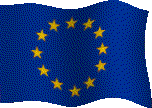

Currently available functional brain imaging techniques, such as nuclear medicine tomographic techniques (i.e. Positron Emission Tomography, - PET or Single Photon Emission Computed Tomography - SPECT) or Magnetic Resonance Spectroscopic Imaging (MRSI), are affected by a relatively low spatial resolution. As a result, accurate quantification using these tomographic techniques is not possible for structures that have dimensions comparable to the spatial resolution of the scanner due to Partial Volume Effects (PVE).
This results in a limitation of the applications of functional techniques, especially in the study of many pathologies in which atrophy is a relevant feature (among the others, diseases with a great social impact such as Alzheimer's Disease, Parkinson's Disease, Creutzfeldt-Jakob Disease, Multiple Sclerosis).
Consequently, most functional imaging data are used without any correction for partial volume effects (PVE), and this is felt to be one of the major limitations in the growth of functional imaging techniques.
No commercial software for processing of biomedical images is currently available which implements automated PVE correction functions.
Aim of this project is to develop and standardise fully automated protocols for correction of partial volume effects in low-resolution functional PET, SPECT and MRSI data, using segmented brain MR images, to obtain accurate quantitative functional data.
After performance testing using computer simulations, the procedure
will be validated in participating Centres using a dedicated brain
phantom designed specifically for this purpose. Quality control
procedures, including phantom measurements, will be implemented.
In particular, an anthropomorphic phantom of the human brain, suitable for PET,
SPECT , CT
and MRI scannning (STEPBrain
©, STEreolithographed Phantom of the Brain) has been developped ("Procedure for Building a Biomorphic, Stereo-Lithographic,
Multi-Compartmental Phantom Useful for Multi-Analytical Studies and Related
Device"; patent pending with priority date 25 September 2002, inventors:
Bruno Alfano, Anna Prinster, Mario Quarantelli).
The whole procedure will need to be accurate and yet simple and easy-to-use to allow its routinely use in both clinical activity and research protocols.
In order to ensure the largest possible diffusion of use of the software, platform independence will be guaranteed by implementation on a workstation equipped with all DICOM (Digital Imaging and Communications in Medicine, accepted as the standard exchange image format by virtually all scanner producers) capabilities needed to receive from the scanners the images, to retrieve from the scanners the images of previous studies, to output to a DICOM device the corrected images.
The PVE correction method will be made available on a workstation supporting
all relevant software for needed pre-processing steps (i.e. segmentation,
co-registration, digital atlas application), to provide an integrated
tool for comprehensive analysis of multi-.modality morpho-functional
images.
Participants
Last edit: 26 January 2005